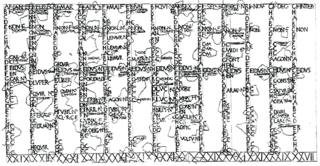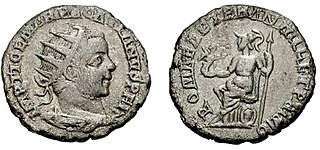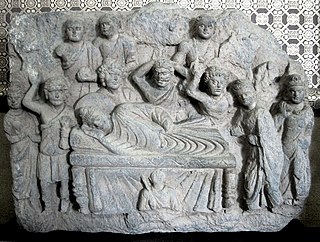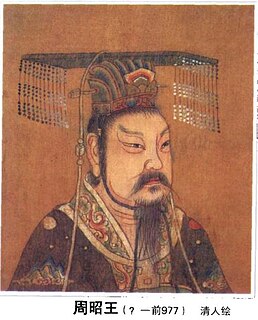| Millennium: | 1st millennium BC |
|---|---|
| Centuries: | |
| Decades: | |
| Years: |
| 545 BC by topic |
| Politics |
|---|
| Categories |
| Gregorian calendar | 545 BC DXLIV BC |
| Ab urbe condita | 209 |
| Ancient Egypt era | XXVI dynasty, 120 |
| - Pharaoh | Amasis II, 26 |
| Ancient Greek era | 58th Olympiad, year 4 |
| Assyrian calendar | 4206 |
| Balinese saka calendar | N/A |
| Bengali calendar | −1137 |
| Berber calendar | 406 |
| Buddhist calendar | 0 |
| Burmese calendar | −1182 |
| Byzantine calendar | 4964–4965 |
| Chinese calendar | 乙卯年 (Wood Rabbit) 2152 or 2092 — to — 丙辰年 (Fire Dragon) 2153 or 2093 |
| Coptic calendar | −828 – −827 |
| Discordian calendar | 622 |
| Ethiopian calendar | −552 – −551 |
| Hebrew calendar | 3216–3217 |
| Hindu calendars | |
| - Vikram Samvat | −488 – −487 |
| - Shaka Samvat | N/A |
| - Kali Yuga | 2556–2557 |
| Holocene calendar | 9456 |
| Iranian calendar | 1166 BP – 1165 BP |
| Islamic calendar | 1202 BH – 1201 BH |
| Javanese calendar | N/A |
| Julian calendar | N/A |
| Korean calendar | 1789 |
| Minguo calendar | 2456 before ROC 民前2456年 |
| Nanakshahi calendar | −2012 |
| Thai solar calendar | −2 – −1 |
| Tibetan calendar | 阴木兔年 (female Wood-Rabbit) −418 or −799 or −1571 — to — 阳火龙年 (male Fire-Dragon) −417 or −798 or −1570 |
The year 545 BC was a year of the pre-Julian Roman calendar. In the Roman Empire, it was known as year 209 Ab urbe condita . The denomination 545 BC for this year has been used since the early medieval period, when the Anno Domini calendar era became the prevalent method in Europe for naming years.

The Roman calendar was the calendar used by the Roman kingdom and republic. The term often includes the Julian calendar established by the reforms of the dictator Julius Caesar and emperor Augustus in the late 1st century BC and sometimes includes any system dated by inclusive counting towards months' kalends, nones, and ides in the Roman manner. The term usually excludes the Alexandrian calendar of Roman Egypt, which continued the unique months of that land's former calendar; the Byzantine calendar of the later Roman Empire, which usually dated the Roman months in the simple count of the ancient Greek calendars; and the Gregorian calendar, which refined the Julian system to bring it into still closer alignment with the solar year and is the basis of the current international standard.

The Roman Empire was the post-Roman Republic period of the ancient Roman civilization. It had a government headed by emperors and large territorial holdings around the Mediterranean Sea in Europe, North Africa, and West Asia. From the constitutional reforms of Augustus to the military anarchy of the third century, the Empire was a principate ruled from the city of Rome. The Roman Empire was then divided between a Western Roman Empire, based in Milan and later Ravenna, and an Eastern Roman Empire, based in Nicomedia and later Constantinople, and it was ruled by multiple emperors.

Ab urbe condita, or Anno urbis conditæ, often abbreviated as AUC in either case, is a convention that was used in antiquity and by classical historians to refer to a given year in Ancient Rome. Ab urbe condita literally means "from the founding of the City," while anno urbis conditæ means "in the year since the City's founding." Therefore, the traditional year of the foundation of Rome, 753 BC, would be written AUC 1, while AD 1 would be AUC 754. The foundation of the Empire in 27 BC would be AUC 727.
Contents
In the Buddhist calendar, it corresponds to the year 0, traditionally the year when the Buddha reached parinirvana. However, different traditions disagree about the actual year 0, with many placing it in the following year 544 BC instead.

The Buddhist calendar is a set of lunisolar calendars primarily used in mainland Southeast Asian countries of Cambodia, Laos, Myanmar and Thailand as well as in Sri Lanka and Chinese populations of Malaysia and Singapore for religious or official occasions. While the calendars share a common lineage, they also have minor but important variations such as intercalation schedules, month names and numbering, use of cycles, etc. In Thailand, the name Buddhist Era is a year numbering system shared by the traditional Thai lunisolar calendar and by the Thai solar calendar.

In Buddhism, the term parinirvana is commonly used to refer to nirvana-after-death, which occurs upon the death of the body of someone who has attained nirvana during his or her lifetime. It implies a release from the Saṃsāra, karma and rebirth as well as the dissolution of the skandhas.
The year 544 BC was a year of the pre-Julian Roman calendar. In the Roman Empire, it was known as year 210 Ab urbe condita. The denomination 544 BC for this year has been used since the early medieval period, when the Anno Domini calendar era became the prevalent method in Europe for naming years.

